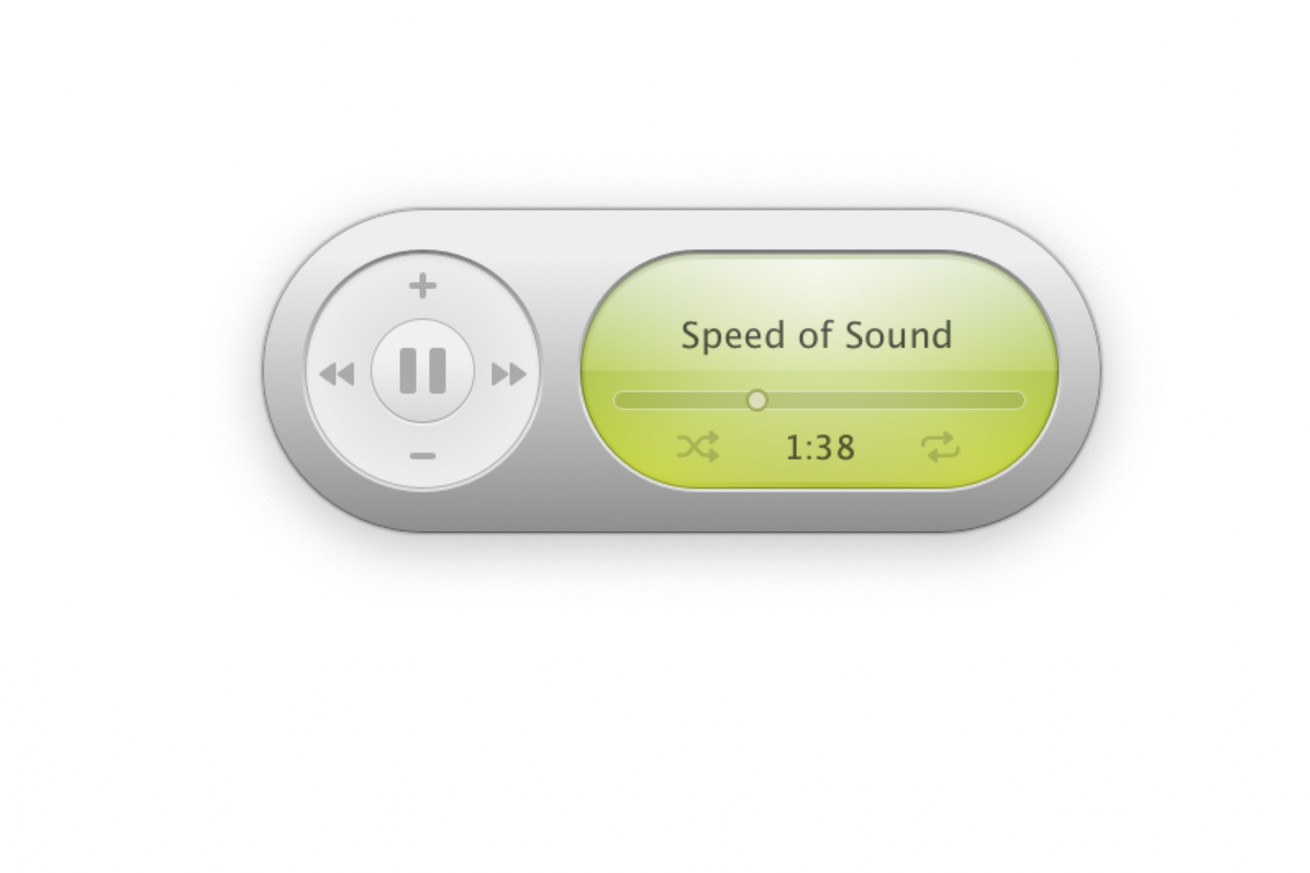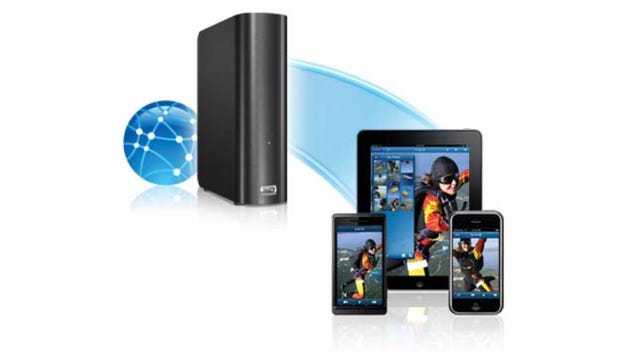| How to Repair Laminate Flooring Posted: 30 Jun 2021 01:00 AM PDT Whether your laminate flooring has minor chips and scratches or water-damaged boards, repairing it is a project you can do yourself with the right tools and technique. To fix minor damage, all you need is a laminate floor repair kit with putty to fix big chips or a floor repair marker to hide small scratches.[1] To replace a board, remove the surrounding boards or cut out the damaged board before laying a new one in place. [Edit]Repairing Minor Chips and Scratches - Clean the damaged area to remove any dirt from the chip or scratch.[2] Wipe the damaged part of the floor with a clean, damp cloth. Let the floor dry completely before you proceed.[3]
- This method works for minor chips and scratches that can be repaired with putty or a marker specifically made to repair laminate flooring.[4] For example, if you drop a knife and it leaves a small cut in the floor, you can easily repair the damage with a laminate floor repair kit.
- Buy a laminate floor repair kit that closely matches the color of your floor.[5] Get laminate floor repair putty for larger chip repairs or a floor repair marker for smaller scratches. Take an extra piece of flooring with you to the home improvement store, if you have one, to find the closest color.[6]
- You can mix multiple colors of putty together to get a matching color if you can't find one close enough.
- Disguise small scratches with a floor repair marker. Take off the cap of the marker and carefully color in the scratches. Let the marker dry for 30 minutes to 1 hour.[7]
- Add more coats of the marker after it dries if the scratch is still visible.
- Fill in large chips using putty.[8] Scoop out a bit of putty on a putty knife and spread it into the chipped area. Use the putty knife to smooth it out so it's level with the rest of the board, then let it dry for 1 hour.[9]
- If the chip is particularly deep, then apply several thin coats of the putty until it is even with the floor.
- Wipe around the area with a clean, dry cloth to remove extra marker or putty. Carefully wipe around the repaired area to remove any marker or filler that got on the undamaged flooring. If you used putty, be sure to do this before it dries.[10]
- Use a cleaning solvent designed for laminate flooring if you need something stronger.
[Edit]Replacing Damaged Boards Near the Edges - Remove any baseboards, thresholds, or molding from around the area. Start at the side closest to the damaged board or boards. Carefully pry away baseboards and molding from the wall and pry thresholds up from any doorways with a pry bar.[11][12]
- This method works when the damaged boards are close enough to the edge of the floor that it is possible to remove a small number of surrounding boards to get to the damaged boards and replace them.
- Try your best not to damage any of the pieces that you pry away so that you can replace them afterward.
- Lift out the boards starting with the ones closest to the edge. Insert a pry bar under the boards at their seams and press down on the end of it like a lever to pop the joints loose. Work from the edge where you removed baseboards and molding in towards the site of the damage until you can remove the damaged boards.[13]
- Set aside the boards that are still good, in the order you removed them, so that you can replace them afterward.
- Replace the damaged board with a new one. Line up the tongue and groove of the new board the same way as those of the board you removed were lined up. Snap the new piece into position.[14][15]
- Save the damaged board so that you can use it for future repairs. For example, if you need to match the color to repair scratches and chips, you can take it with you to the home improvement store when you go looking for the repair kit.
- Return all the boards you removed to their places. Work in reverse order as when you removed them, starting with the boards that surround the replacement board. Line up the tongues and grooves, then slide or gently tap them back into place with a hammer if there is a lot of friction.[16][17]
- If you use a hammer to tap any boards into place, use the damaged board you removed as a buffer between the hammer and the good boards to prevent damaging them.
- Tack any baseboards, molding, or thresholds back in place. Line up the baseboards, molding, and thresholds in the same order you removed them to reinstall them around the edges of the floor. Gently tack them back into place with baseboard nails and a hammer using the same nails and holes as before.[18]
- Use new baseboard nails if any of them got damaged when you pried them out earlier on.
[Edit]Replacing a Board in the Middle of the Flooring - Draw a cut line in from each corner of the board and a rectangle in the middle. Mark a line along a straight edge with a pen or pencil in from each corner of the board diagonally towards the center. Connect the inner ends of the lines with straight lines to make a rectangle that you can cut out from the center of the board.[19]
- This method works to replace a single damaged board in the middle of your laminate flooring, where it would be too difficult to replace by removing surrounding boards starting from an edge.
- Drill a relief hole at the ends of each relief cut line. Use a drill bit to make a relief hole at the inner ends of the lines you marked for the cut lines. Make another set of holes in from the outer ends of the relief lines.
- Make 8 relief holes in total so that you can cut in 2 phases—1 to remove the center section and 1 to remove the sides.
- Cut out the center of the board with a circular saw. Set the depth of the saw a bit deeper than the depth of the flooring. Lift the blade guard and plunge the saw into the board, starting at 1 of the inner relief holes. Cut from hole to hole in a rectangular pattern to connect the inner section of relief holes you made and remove the center section.[20]
- You will be left with the edges of the damaged board still connected to the good boards around them.
- Cut from the center to the outside of the relief holes. Cut with your circular saw from the middle diagonally out along the remaining cut lines. Stop when you reach the relief holes.[21]
- This will separate the remaining edges of the board at the corners so you can remove them.
- Remove the edge pieces from the surrounding boards. Pry up each side where it is connected to a surrounding board with your hands or pliers if they are stuck. Discard these pieces.[22]
- If there is any glue on the tongues of surrounding boards, then scrape it off with a flathead screwdriver before installing the replacement board.
- Remove the grooves from your replacement board. Your replacement board will have 2 tongues and 2 grooves. Carefully cut off the tongues and bottom lips of the grooves with a utility knife so that you will be able to drop the new board into place.[23]
- To cut off the bottom lips of the grooves, sick the blade of the knife inside the grooves and cut them off from the inside.
- Make several passes with the utility knife to score the parts you are cutting off, then snap them off with pliers.
- Apply floor glue to the edges of the replacement board. Put a bead of floor glue along the edges where you cut off the tongues and underneath the top half of the grooves where you cut off the bottom lips.[24]
- You can get floor glue at a home improvement center or flooring store if you don't have any.
- Fit the board into place. Match the top half of the grooves on your new board with the tongues on the surrounding boards. The board will now fall into place because you removed the tongues from the new board.[25]
- If the board is not fitting right, then use your utility knife to shave off any rough parts until it drops nicely into place.
- Use a damp cloth to remove any excess glue. Wipe away any glue that squeezes out of the seams. Use a damp cloth so that you don't spread it around on the surrounding boards.[26]
- Keep the cloth handy so you can wipe again after you weigh down the board if any more glue squeezes out.
- Weigh down the repaired area for 24 hours. Stack some heavy books or another heavy object on top of the newly-fitted board to help the seams adhere together. Keep the weight on the board for 24 hours to ensure the glue is completely dry.[27]
- Check if any more glue squeezed out of the seams after you placed weight on the board, and wipe it away with a damp cloth.
- If you use something that could scratch the laminate, like a brick, place a towel underneath to protect it.
[Edit]Things You'll Need [Edit]Repairing Minor Chips and Scratches - Laminate repair kit
- Damp cloth
- Dry cloth
- Putty knife
[Edit]Replacing Damaged Boards Near the Edges - Replacement laminate floor board
- Pry bar
- Hammer
- Baseboard nails
[Edit]Replacing Boards in the Middle of the Flooring - Drill
- Circular saw
- Replacement laminate floor board
- Utility knife
- Flathead screwdriver
- Floor glue
- Pen or pencil
- Straight edge
- Damp cloth
[Edit]Related wikiHows [Edit]References [Edit]Quick Summary |
| How to Cook Frozen Salmon Posted: 29 Jun 2021 05:00 PM PDT Having a bag of salmon fillets in the freezer guarantees that you can throw together a fast meal. Since most fillets are thin, you can safely cook them without defrosting them first. Just decide if you want to make them on the stove, in the oven, or on the grill. While the salmon is cooking, you can prep flavorful sides. Dinner will be on the table before you know it! [Edit]Ingredients - 2 frozen salmon fillets, about each
- of melted butter or olive oil
- 2 to 3 teaspoons (4 to 6 g) of your favorite spice mix
Makes 2 servings [Edit]Roasting Frozen Salmon in the Oven - Preheat the oven to and rinse 2 salmon fillets under cold water. Remove 2 frozen salmon fillets from their packaging and rinse them under the tap just until pieces of ice melt off.[1]
- Pat the salmon dry and brush each side with melted butter. Use a paper towel to pat the moisture off of the fillets. Then, melt of butter into a small dish and dip a pastry brush into it. Brush each side of the salmon with the butter.[2]
- If you prefer to use a different cooking fat, you could use regular olive (also called light), canola, or coconut oil.
- Put the fillets skin-side down into a pan and season the fish. You can use any herbs or spices you like. For a simple seasoning, sprinkle 1 teaspoon (5 g) of kosher salt, 1/4 teaspoon (0.5 g) of ground black pepper, 1/2 teaspoon (1 g) of garlic powder, and 1/2 teaspoon (1 g) of dried thyme over the fillets.[3]
- Cover the baking dish and cook the salmon for 10 minutes. Cover the baking dish tightly so no steam can escape as the fish cooks. Put the dish in the preheated oven and cook the salmon until it releases liquid.[4]
- Covering the pan as the fish starts to cook will help it stay tender and prevent it from drying out.
- Uncover the salmon and bake it for another 20 to 25 minutes. Wear oven mitts to peel the sheet of aluminum foil off of the dish and ensure that the escaping steam doesn't burn you. Roast the uncovered salmon until it reaches with an instant-read thermometer.[5]
- If your fillets are thin [under ], check them after 20 minutes. Wait until closer to 25 minutes if the fillets are over thick.
- Remove the salmon and rest it for 3 minutes before serving. Set the baking dish on a rack and leave the fish to rest. The fillets will finish cooking and will reabsorb some of the liquid. Then, transfer the fillets to plates and serve the fish with your favorite sides, such as roasted vegetables, steamed rice, or a garden salad.[6]
- Refrigerate leftover salmon in an airtight container for up to 3 to 4 days.
[Edit]Pan-Searing Frozen Salmon - Heat a skillet over medium-high and rinse 2 salmon fillets under cold water. Set a heavy skillet on the stove and turn the burner on while you get the salmon out of the freezer. Remove it from the packaging. Run cold water in the sink and hold the fillets under the tap until pieces of ice melt off of the fish.[7]
- You can use a nonstick or cast-iron skillet.
- Pat the salmon fillets with a paper towel and brush them with oil. Dry each side of the salmon with the paper towel and set them on a plate. Then, brush each side with olive oil. This will season the salmon and prevent it from sticking to the skillet.[8]
- Drying the salmon will help the skin crisp in the skillet.
- Place the fillets in the skillet and cook them for 3 to 4 minutes. Lay the salmon into the hot skillet so they're flesh-side down. Keep the lid off of the skillet and cook the salmon over medium-high heat until the flesh has browned.[9]
- You can carefully shake the pan a few times as the salmon cooks to loosen the salmon and keep it from sticking.
- Flip the fillets and season them. Use a spatula to carefully flip each fillet over in the skillet. Then, sprinkle the fish with 2 teaspoons (4 g) of equal amounts of onion powder, paprika, and cayenne pepper if you'd like a smoky, spicy flavor.[10]
- Alternatively, you could use your favorite spice blend, such as Old Bay, cajun seasoning, or dry barbecue rub.
- Cover the skillet and cook the salmon for 5 to 8 minutes over medium heat. Set the lid on the skillet so it traps moisture and prevents the fish from drying out. Then, turn the burner down to medium and cook the fish until it's flaky in the center. To ensure the fish is done, you can insert an instant-read thermometer to see if the fish reaches .[11]
- Rest the salmon for 3 minutes before you serve it. Move the fillets to serving plates and get out side dishes while the fish rests. Try serving the pan-seared salmon with stir-fried vegetables, roasted potatoes, or wild rice.
- Refrigerate leftover salmon in an airtight container. You can store the fish for up to 3 to 4 days.
[Edit]Grilling Frozen Salmon - Heat a gas or charcoal grill to high. If you're using a gas grill, turn the burners to high. If you're using a charcoal grill, fill a chimney with briquettes and light them. Dump the briquettes onto the grill once they're hot and lightly covered with ash.[12]
- If you'd like your salmon to have a smoked flavor, add a handful of soaked woodchips to the grill.
- Rinse 2 frozen salmon fillets under cold water. Get out 2 fillets that are about each and remove them from their packaging. Run cold tap water and hold the fillets under the water so ice on the surface of the fish melts.[13]
- You can also use salmon steaks that are around the same size.
- Pat the salmon dry and brush it with olive oil. Take a paper towel and pat each side of the salmon with it to remove moisture. Pour of olive oil into a small dish and dip a pastry brush into it. Brush each side of the salmon with the oil.[14]
- If you don't have olive oil, use vegetable, canola, or coconut oil, since these can withstand the high heat of the grill.
- The oil will prevent the salmon from sticking to the grill grate.
- Season your salmon with 1 tablespoon (6 g) of a dry rub. You can use your favorite seasoning rub or mix up a barbecue dry rub. Combine 1 teaspoon (4 g) of brown sugar with 1 teaspoon (2 g) of paprika, 1/2 teaspoon (1 g) of onion powder, 1/2 teaspoon (1 g) of garlic powder, and a pinch of ground black pepper.[15]
- Lay the salmon on the grill and cook it for 3 to 4 minutes. Place the fish skin-side down on the grate and put the lid on the grill. Leave the salmon to cook without turning it or lifting the lid.[16]
- The skin shouldn't stick to the grill because you oiled it.
- Flip the salmon and grill it for another 3 to 4 minutes. Wear oven mitts to lift off the lid and use a spatula to carefully flip each fillet over. Put the lid back on the grill and let the fish finish cooking.[17]
- You should see definite grill marks on the salmon skin once you flip it over.
- Remove the salmon once it reaches and rest it for 3 minutes. Insert an instant-read thermometer into the thickest part of a salmon fillet. You can transfer the fish to a serving platter once the fish reaches and let it rest a few minutes while you get side dishes ready.[18]
- Store leftover grilled salmon in an airtight container in the refrigerator for up to 3 to 4 days.
- If you'd like to cook a long salmon fillet instead of individual fillets, increase the cooking time by at least 5 minutes before you check the fish.
[Edit]Things You'll Need [Edit]Pan-Seared Salmon - Heavy skillet
- Paper towels
- Measuring spoons
- Spatula
- Serving plate
[Edit]Oven-Roasted Salmon - Paper towels
- Baking dish
- Aluminum foil
- Pastry brush
- Measuring spoons
- Spatula
- Instant-read thermometer
- Serving plate
[Edit]Grilled Salmon - Paper towels
- Measuring spoons
- Pastry brush
- Grill
- Spatula
- Instant-read thermometer
- Serving plate
[Edit]References [Edit]Quick Summary |
| How to Cook Quinoa in a Rice Cooker Posted: 29 Jun 2021 09:00 AM PDT Quinoa is delicious and nutritious. Even better, it's easy to cook, especially if you steam it in a rice cooker. Not only is this method fast, but the result will be light, fluffy quinoa every time. You can even add other ingredients to flavor your quinoa as it cooks. For more cooking options based on the type of quinoa you're cooking, check out How to Cook Black Quinoa and How to Cook White Quinoa. [Edit]Ingredients - 1 cup (170 g) of quinoa
- of water
- 1/2 teaspoon (2.5 g) of salt
Makes 4 servings [Edit]Making Basic Quinoa - Rinse the quinoa in cold water. Put 1 cup (170 g) of quinoa into a fine mesh strainer or sieve and hold it under cold running water. Use your hands to swish the quinoa around as you rinse it.[1]
- It's important to rinse quinoa before cooking it since this will remove the seed's bitter covering.
- If you don't have a sieve fine enough to rinse the quinoa, try lining a colander with cheesecloth or coffee filters instead.
- Put the quinoa, cold water, and salt into the rice cooker. Scoop the rinsed quinoa into your rice cooker and add of cool or cold water. Then, stir in 1/2 teaspoon (2.5 g) of salt to flavor your quinoa as it cooks.[2]
- Avoid using hot water, which can give the quinoa a gummy texture.
- Cover the rice cooker and turn it on. Put the lid on your rice cooker and turn it on. If your rice cooker has separate settings for white and brown rice, choose the white rice option. Both white rice and quinoa need about 15 minutes to cook.
- Avoid lifting the lid as the quinoa cooks since it won't steam properly if moisture escapes.
- You may need to read the manufacturer's instructions for your rice cooker if you're not sure exactly how to operate it.
- Let the quinoa sit for 3 to 5 minutes before you fluff it with a fork. Keep the lid on the rice cooker and unplug the machine. The quinoa will finish steaming as it rests for a few minutes. After about 5 minutes, lift the lid and fluff the quinoa gently with a fork.[3]
- Fluffing the quinoa will loosen any grains that are compacted or stuck together, helping your quinoa have a lighter texture.
- Serve the quinoa. You can serve your quinoa plain, in place of rice or other elements of your meal. However, you can also incorporate quinoa into dishes and other sides. For instance, you can chill your quinoa and mix it with vinaigrette and shredded vegetables to make a cold quinoa salad.[4]
- To store leftover quinoa, put it into an airtight container and refrigerate it for up to 5 days.
- You can also freeze the quinoa for up to 2 months. To defrost it, put the container in the refrigerator overnight.
[Edit]Trying Variations - Substitute a flavorful liquid for the water. One of the simplest ways to add flavor to your quinoa is to substitute the water with vegetable stock or chicken broth. Just replace the water with an equal amount of the stock or broth.[5]
- If you're concerned that stock will make your quinoa too salty, try using low-sodium broth or stock instead.
- Try adding a squirt of lemon juice to the liquid for a bright burst of color.
- Add spices to give the quinoa a unique flavor. Stir up to 2 tablespoons (12 g) of your favorite dried seasonings into the cooking liquid. The quinoa will absorb the flavors as it cooks. Try to pair the seasonings you use in the quinoa with the rest of the meal you're making. For example, you might try adding:[6]
- Cumin, lime juice, and cilantro if you're adding your quinoa to tacos or burritos.
- Curry powder if you're making an Indian or Caribbean-inspired dish.
- Chinese five-spice powder to complement an Asian meal.
- Cajun seasoning mix for a Southern kick.
- Stir in aromatics or oil for another way to flavor the quinoa. Toss in a clove of crushed garlic, a piece of lemon peel, or a sprig of fresh rosemary to add an instant flavor boost to your quinoa. You can also pour in of a flavored oil, such as walnut, toasted sesame, or hazelnut.[7]
- Remove the garlic, peel, or herbs just before serving the quinoa.
- Try using oils that are infused with different flavors, such as herbs or chilis. You can even make your own infused oils, if you'd like!
- Use coconut milk and add fruit for breakfast quinoa. For a nice change from your morning oatmeal, cook a batch of quinoa in the rice cooker, but use coconut milk instead of water. Stir in your favorite toppings, like fresh fruit, honey, or ground cinnamon just before serving.[8]
- If you prefer, you can use regular milk or whichever milk alternative you prefer, such as almond, hemp, or soy milk.
- If you want to use dried fruit, add it to the rice cooker when you add the quinoa. This will allow the fruit to plump up as it cooks.
- Always read your rice cooker's instruction manual. Some manuals will even include instructions for cooking quinoa.
[Edit]Things You'll Need - Fine mesh strainer or sieve
- Coffee filters or cheesecloth (optional)
- Rice cooker
- Spoon
- Measuring cups and spoons
[Edit]References [Edit]Quick Summary |

































































